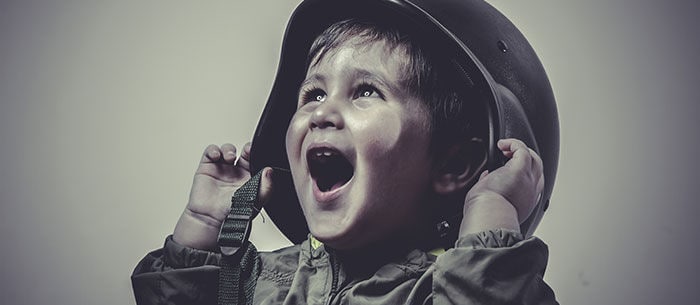My husband is a lieutenant colonel in the U.S. Army and, in the 10 years we’ve been together, we’ve had many ups and downs. By far, the best part of military life was getting to live in and explore a lot of really cool places. The hardest part? The long separations, which often happened at the most inconvenient times — like when he was deployed to Afghanistan two weeks after our twin boys were born. Originally, he wasn’t slated to return until after their first birthday, but he was wounded in action three months in and was sent home to recover — which, of course, created even more stress.
No, military life isn’t easy, but it’s helped make our families stronger and more resilient than you could imagine. More than 1.3 million men and women currently serve in the U.S. military. Of those, roughly 55 percent are married and 43 percent have children.
Here are 12 “facts of life” for today’s U.S. military families:
- Over 2 Million U.S. Children Have a Parent Who Served in Iraq or Afghanistan
And many of these parents have been deployed more than once. In his 19-year Army career, my husband served once in both Iraq and Afghanistan and received three Purple Hearts for injuries he received in combat.
- The Average Military Family Moves Every Two to Three Years
That’s three times more frequently than the average civilian family. At only 4 years old, my twins are already living in their third city, but their dad has moved more than 10 times throughout his career. > View the seven most common mistakes military families make when moving to a new place
- Deployments Typically Last One Year
But the daily emails, weekly phone calls and frequent Skype chats I shared with my husband while he was in Afghanistan were in stark contrast to my grandparents’ experience during World War II. Back then, my grandma would wait weeks just to receive one letter!
- Sometimes, Both Parents Get Deployed at the Same Time
There are roughly 84,000 dual-military couples in the U.S., and about 36,000 of them have kids. When both get deployed, their children have to live with interim caregivers, such as grandparents, aunts, uncles or friends.
- The Average Military Child Will Change Schools Six to Nine Times
Since academic standards and requirements vary by school district, it can be difficult for military kids to maintain good grades. To make these transitions easier, the Department of Defense Education Activity (DoDEA) partnered with the Department of Education in 2007 to provide resources and educator training to military-connected school districts. It’s also worth noting that more than 6 percent of the 1.2 million children with active-duty parents are currently homeschooled.
- Military Families Often Have to Give up Their Beloved Pets
Overseas transfers, deployments and long training exercises can force families to relinquish their pets. But organizations like Dogs on Deployment and PACT for Animals are working to connect military families with temporary foster volunteers.
- The Unemployment Rate Among Military Spouses Is More Than Three times the National Average
I can do my job as a freelance writer from anywhere in the world, but many military spouses have to find new jobs with each move. That’s especially hard when there are inconsistent licensing requirements and tough job markets. In 2011, Michelle Obama and Dr. Jill Biden established The Joining Forces Initiative to provide employment and career development opportunities to these military spouses, among other services.
- More Than 52,000 U.S. Service Members Have Been Wounded in Action Since 9/11
Many of them, like my husband, have been wounded more than once.
- But Hundreds of Thousands More Suffer From Invisible Wounds of War
Approximately 320,000 service members have experienced a traumatic brain injury in Iraq or Afghanistan. Many more have suffered from combat-related stress, depression and post-traumatic stress disorder.
- Military Caregivers Are Unsung Heroes
There are roughly 5.5 million military caregivers — often spouses or relatives — who care for wounded service members or veterans; one-fifth of them tend to post-9/11 veterans. Unsurprisingly, caring for a wounded warrior can place huge emotional and financial burdens on these people. Though helping my husband with his recovery was difficult while also caring for infant twins, his injuries were minor compared to those of others. Many caregivers have had to go so far as to quit their jobs to be with wounded service members or veterans who need round-the-clock care.
- Service Members Divorce Less Frequently Than Civilians
Despite the stress of frequent moves and long separations, Military.com argues that the military divorce rate declined from 3.7 percent in 2011 to 3.1 percent in 2014. Conversely, the civilian rate stayed at 3.6 percent over the same period of time. Maybe absence really does make the heart grow fonder.
- Military Children Are Twice as Likely to Join the Military as Civilian Children
As difficult as military life can be, it does also bring about a deep sense of pride, commitment and service to our country that’s difficult to describe unless you’ve lived it.
My family has been through some tough times, but they have made us stronger and shaped us in many, many positive ways. And I wouldn’t change that for the world.



